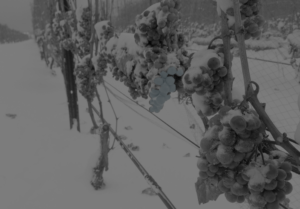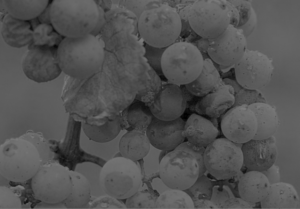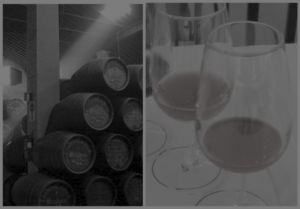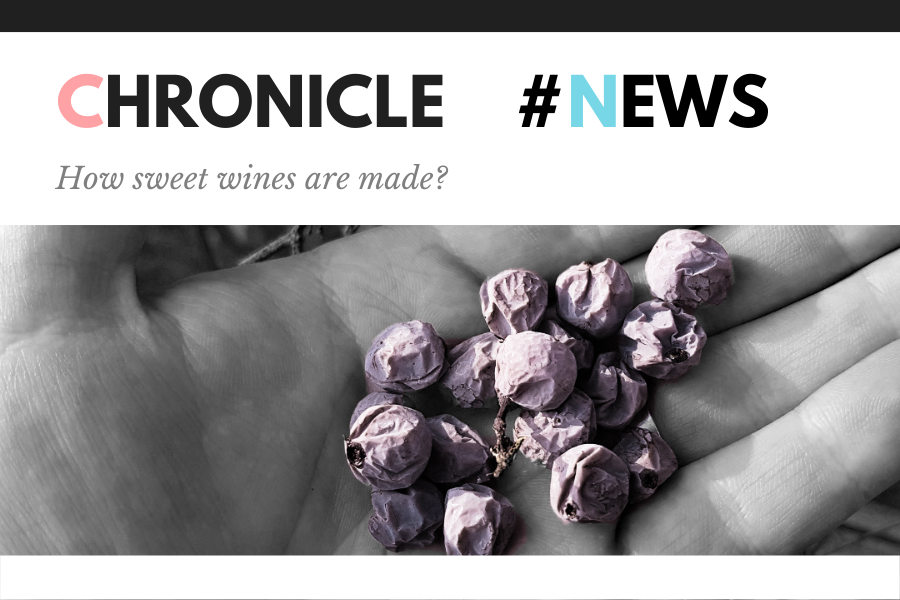Written by Qingrui Song
How sweet wines are made?
When you drink sweet wine, have you ever wondered where these different sweet tastes come from? It seems that every sweet wine has its own unique style of sweetness. But why? Let us explore how sweet wines are made. The sweet wine refers to residual sugar that is more than 30 grams per litre, which is generally naturally sweet and unfortified. There are several methods to make sweet wines by increasing the sugar level. For example, there is late harvest botrytis infected grapes, late harvest ice wine, freeze concentration, addition of juice concentrate, and drying the grapes to increase the concentration.
Ice Wine
The sommelier, Alpana Singh said: “It takes a great deal of labour and love to make ice wine. When you have it with dessert, you miss the point of enjoying it on its own.” This is a very interesting comment. Some people who are not familiar with ice wine, may take for granted that ice wine is cold wine according to the literal meaning. It is an understandable opinion because the optimum way of drinking ice wine is at a low temperature. However, the reason it is called ice wine is that it uses frozen grapes to produce ice wine for tasting sweet. Specifically, the characteristic of ice wine is refreshing and clean sweetness, and this sweet style comes from grapes covered in snow and ice. Due to the difficulty of harvesting grapes in cold winter and using frozen grapes to make juice, it is very hard work and so it is impossible to make valuable ice wine without considerable commitment and enthusiasm. So now you know the secret of ice wine, you will not choose dessert when you next enjoy ice wine.

Here is the main winemaking method to make ice wine. Firstly, grapes are harvested from the vineyard at a temperature below -8℃ (Nourissat, 2018). The cold temperature allows sugar to concentrate on grapes to increase the sweet level. The consumer should be careful not to buy fake ice wine. If the grapes are frozen in refrigeration rather than naturally frozen in the natural environment, this wine will not be regarded as true ice wine. Next step in the process, is getting grape juice before fermentation. When using frozen grapes to get juice, this can do damage to the presser. Furthermore, grape juice is not easily extracted at low temperature as most water components are frozen. That is one of the reasons why ice wine is expensive.
Botrytis Infected Wine
For microbiology fans, the word botrytis is a mysterious name of the fungus. Humid microclimates are very important for creating botrytis style. The fungus Botrytis attacks grapes in humid conditions, developing into gray rot. When a desirable botrytis infection occurs in grapes, it can produce what is called noble rot (Jarvis, 2017). Noble Rot causes grapes to dehydrate. The sugar concentration increases due to water loss by evaporation, which leads to grape gaining a high level of sweetness. Gently press botrytis-infected grapes to obtain juice to produce sweet botrytis-infected wine. Botrytis leads to many flavours being formed, producing rich and mellow sweet wine with honey, spice and medicinal aromas.

Fortified Wine of Pedro Ximénez (PX) Sherry
PX is one of the Sherry wines, which is the highest sweet sherry. William Shakespeare spoke highly of Sherry as “Spanish sunshine in a bottle!” In my opinion, the PX Sherry is honey sweet out of the bottle. This fortified sweet wine is made of dry grapes. The white grape variety is also Pedro Ximénez. The harvested grapes are dried in the sun. This method can remove water from grapes to concentrate the sugar levels (Sweet and Sabroso, 2018). In the meantime, the additional flavour will be formed. That is why PX Sherry has dried fruity aroma. The fermentation step is very special because of partial fermentation (Sweet and Sabroso, 2018). It means that the fermentation is stopped by adding high alcohol spirits to prevent all the sugar converting to ethyl alcohol, which leads to high sweet levels left in the wine. The following production process is similar to that used when making Sherry, that is using a Solera system.

Freeze Concentration Method
After getting juice from grapes, put it in the chilled tank to allow water to freeze out of the juice. The concentrated juice can be run off from the tank, leaving a block of ice in the tank. This method remains limited and does not make it possible to increase the sugar concentrations very strongly.
References
Jarvis, T. (2017). The Complete Guide to Botrytis. Retrieved from https://www.wine-searcher.com/m/2017/07/the-complete-guide-to-botrytis
Nourissat, V. (2018). Ice Wine 101 in 6 Simple Steps. Retrieved from Ref https://vnourissat.medium.com/ice-wine-101-in-6-simple-steps-196886c3a6d5
Sweet and Sabroso. (2018). Pedro Ximénez (PX) Wine Reduction Sauce – You’ll Want to Put it on Everything! Retrieved from http://www.sweetandsabroso.com/2018/01/recipe-pedro-ximenez-px-reduction-sauce/

